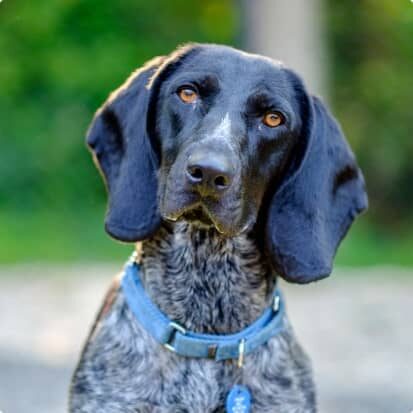Many of us grew up with a family dog. They can bring us happiness, teach us responsibility, and even make us healthier. However, children need to be taught how to interact appropriately and safely with dogs so that they can develop a happy, loving relationship. It’s important to start these lessons at an early age, even if you don’t have a family pet, and always. supervise children and dogs when they are together.
Here are some things that our dogs want children (and some adults) to know:
- Leave dogs alone when they are asleep, resting, eating, or drinking.
- Never sneak up on a dog. Approaching them from the side so that they can see you is always the best approach.
- When you see a dog you want to interact with, let them come to you. Always ask permission to pet any dog.
- Do not enter a dog’s crate or when they are in any other small, confined space.
- Many dogs do not like being pet on the top of their heads. Instead, pet the side of their face, their chin, or their chest.
- Let dogs rest and have space when they are feeling unwell.
- Never grab a dog’s tails or ears.
- Do not let your child put their face close to your dog’s face.
- Do not climb on top of or stand over your dog.
- Avoid yelling or screaming at or around your dog.
- Humans show their affection with hugs and kisses, but dogs do not like this! Instead, show your affection by giving them a chin scratch, belly rub, a treat, or their favorite toy.
Body Language
Being aware of what our dogs are saying is an important part of living with dogs. Most dogs give clear information, we just don’t always speak their ‘language’ fluently. For example, a wagging tail is not always an indicator of happiness – depending on how fast the tail is wagging and what the rest of their body is doing, it could mean that your dog is uncomfortable or scared. Some dog’s physical features may make their body language even more difficult to read. If their ears are cropped or their tail is docked, they can’t communicate as fully as other dogs.
How to tell if your dog is happy:
- A loose, wiggly body.
- Soft eyes and eye contact.
- ‘Play bows’, where their back end is up and their front end is down.
- Playful vocalizations.
- Loose, large, circular tail wags.
How to tell if your dog is not feeling social:
- A stiff body posture.
- Hard staring.
- Low growling.
- Baring their teeth.
- Avoiding other dogs.
- Tail tucked or a high, stiff tail.
- A stiff, fast-moving tail wag.
How to tell if your dog is stressed:
- Licking their lips.
- Avoiding eye contact.
- Sniffing, sneezing, licking, scratching and/or yawning out of context.
- A tucked tail.
- Puffing their cheeks.
- A “whale eye” – this is when a dog turns their head away but eyes are turned to the side, showing the whites of the eye.
If your dog is showing any of these anti-social or stress signs, we recommend that you contact a behaviorist who uses positive training methods. They can work with you to determine the cause of these signs and how to manage them. Never punish a dog when they express that they are uncomfortable. If your dog is punished for communicating, they will stop giving warning signals and resort to more drastic measures.
Positive bonding activities
- Attending a training class as a family is a great way for your dog to learn and interact positively with your children.
- Use, and teach your children to use, positive, reward-based training methods.
- Give your dog plenty of physical and mental exercise.
- Take walks together. Attach a second leash to your dog’s collar to allow your child to practice walking them safely.
- Make sure your dog gets time alone. Everyone in the house needs time to decompress, including your dog. Give your dog a frozen Kong or their favorite treat in a quiet space. Make sure that everyone knows to leave them alone until they are done. Your dog may also need a break during hectic times, such as holidays or parties. What we view as fun can be overwhelming to a dog.
- Practice cues like “sit”, “stay”, “down”, “leave it”, etc to encourage self-control in your dog.
- Try hand-feeding! Ditch your dog’s bowl and let your dog take their food from your hand, and eventually let your child take over, or do it together.
- Practice your dog’s recall.
- Acclimate your dog to handling, so that they get used to being touched. Try playing this game: touch their paw pad for a second, and then give them a treat. Touch their collar, give them a treat. Pet their chest, give them a treat. This will teach your dog that being touched in different parts of their body is a positive thing! If your dog enjoys this game, let the kids participate with supervision. If your dog is not comfortable, stop the game and try again at another time.



